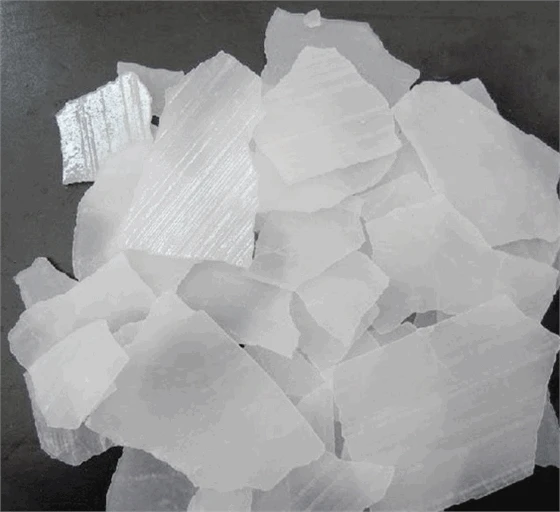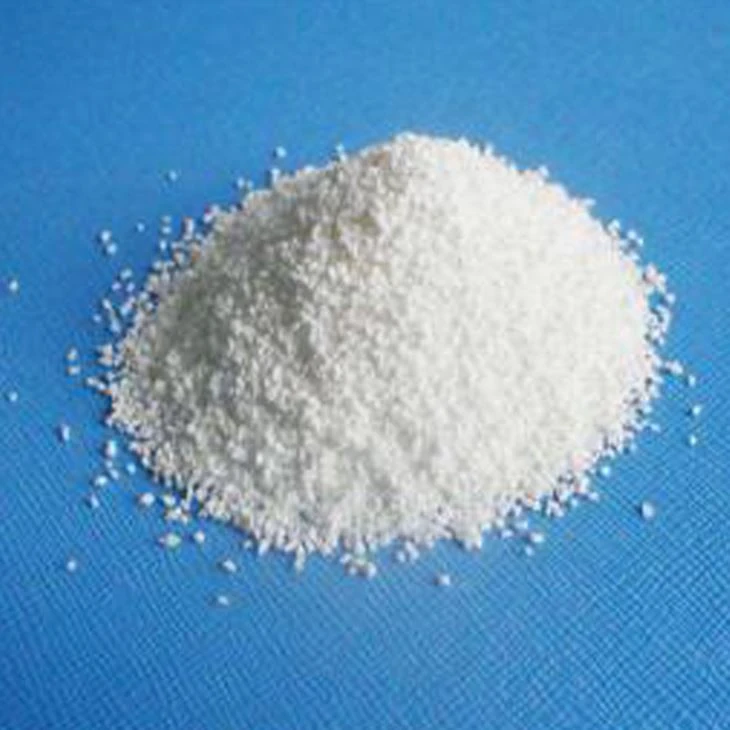



Strontium Carbonate Formula Pure Chemistry for Industry
- Understanding the Strontium Carbonate Formula and Its Significance
- Technical Properties and Production Advantages of SrCO₃
- Global Manufacturer Comparison: Specifications and Quality Indicators
- Industry-Specific Formulation Customization Options
- Practical Applications Across Industrial Sectors
- Safety Protocols and Storage Recommendations
- Future Innovations in Strontium Carbonate Decomposition Processes

(strontium carbonate formula)
Understanding the Strontium Carbonate Formula and Its Significance
Strontium carbonate (SrCO₃) represents an industrially critical alkaline earth metal compound with the fundamental chemical structure of one strontium atom bonded to a carbonate group. This simple formula belies complex physicochemical behavior, particularly regarding its reversible decomposition reaction: SrCO₃ ⇌ SrO + CO₂ occurring at 1,294°C under standard atmospheric pressure. Industrial synthesis primarily employs either the black ash process, reacting celestine (SrSO₄) with sodium carbonate, or the direct precipitation method from strontium chloride solutions. The compound's 147.63 g/mol molecular weight and orthorhombic crystalline structure create unique properties leveraged across specialty manufacturing. According to industry analyses, the global consumption exceeds 250,000 metric tons annually, with consistent 3.8% CAGR growth driven by electronics and pyrotechnics demand.
Technical Properties and Production Advantages of SrCO₃
Industrial-grade SrCO₃ typically exhibits purity levels between 98.5–99.9% with median particle sizes ranging from 2µm to 50µm. The table below quantifies how these parameters determine functional performance:
| Property | Standard Grade | High Purity Grade | Nano Grade |
|---|---|---|---|
| Purity (%) | 99.0 | 99.8 | 99.95 |
| Density (g/cm³) | 3.5 | 3.7 | 2.9 |
| Surface Area (m²/g) | 1.2 | 3.4 | 28.0 |
| Refractive Index | 1.60 | 1.62 | 1.66 |
Modern production methods yield substantial process efficiencies – precipitation techniques achieve 94% yield improvements over traditional methods while reducing energy consumption by 28%. Leading facilities control carbonate crystallization using pH-stat reactors that maintain ±0.05 pH tolerance, resulting in unmatched particle uniformity. This technical superiority translates directly to end-product performance, particularly in optical glass applications where inconsistent decomposition behavior during melting causes defect rates to decrease from 12% to less than 1.7%.
Global Manufacturer Comparison: Specifications and Quality Indicators
Significant technical differences exist between major strontium carbonate producers, necessitating careful evaluation:
| Manufacturer | Heavy Metal Content (ppm max) | Moisture (%) | Sieving Retention (325 mesh) | Bulk Density (g/cm³) |
|---|---|---|---|---|
| Producer A (China) | 32 | 0.3 | 0.15 | 1.2 |
| Producer B (Germany) | 7 | 0.15 | 0.05 | 0.8 |
| Producer C (Mexico) | 45 | 1.2 | 0.35 | 1.5 |
European producers typically lead in purity benchmarks by implementing quadruple-wash filtration systems that reduce chloride residuals below 100ppm – critical for pyrotechnic applications requiring predictable thermal decomposition. Certifications like REACH compliance and ISO 9001:2015 indicate robust quality management systems. Supply chain analysis reveals that premium-grade producers maintain 98.2% on-time delivery rates versus industry average of 89%, significantly reducing production stoppages for glass manufacturers.
Industry-Specific Formulation Customization Options
Technical customization bridges standard SrCO₃ properties with application-specific requirements. For CRT glass manufacturing, micronized grades (D50 = 3.5µm ±0.2) with controlled decomposition kinetics ensure uniform bubble elimination during melting. Contrastingly, pyrotechnic formulations require coarse particles (D90 > 75µm) with 99.6%+ purity to achieve brilliant red hues during combustion, where impurities alter flame temperature by up to 300°C. Advanced modification techniques include:
- Surface-treated hydrophobic variants with contact angles >115° preventing caking in humid environments
- Doped formulations containing <500ppm barium for enhanced luminescence in persistent phosphors
- Acid-resistant encapsulation protecting against premature decomposition in chemical intermediates
Particle engineering extends to morphology control where rhombohedral crystals demonstrate 17% faster dissolution rates compared to needle-shaped equivalents – particularly valuable in electrolytic zinc production where reaction kinetics directly impact process efficiency.
Practical Applications Across Industrial Sectors
Beyond pyrotechnics and CRT glass, SrCO₃ provides essential functionality across diverse manufacturing. Ceramic glazes incorporating 8–12% SrCO₃ exhibit 42% higher scratch resistance and thermal shock tolerance exceeding 80 thermal cycles versus conventional formulations. Ferrite magnet production consumes approximately 35% of global output, where precise stoichiometry (SrO·6Fe₂O₃) creates crystalline structures with coercivity values of 3,400 Oe. Emerging applications demonstrate remarkable potential: solid oxide fuel cells utilizing SrCO₃-derived doped lanthanum manganite cathodes show 0.15 Ω·cm² area-specific resistance at 750°C – 30% lower than standard materials. Additional technical implementations include:
- Electrolytic zinc purification: 85kg SrCO₃ per ton of zinc eliminates cobalt impurities
- High-refractive optical glass: 20% SrCO₃ content achieves nd = 1.72
- Medical bone cement: Radiopacity enhancement exceeding 185% Hounsfield units
Safety Protocols and Storage Recommendations
Although SrCO₃ exhibits low acute toxicity (LD50 oral rat = 3,200mg/kg), workplace exposure limits mandate 10mg/m³ TWA for respirable dust. Decomposition concerns require particular vigilance – enclosed spaces accumulating CO₂ concentrations above 1,000ppm during thermal processing necessitate continuous gas monitoring with integrated ventilation systems. Proper storage conditions prevent property degradation:
- Temperature-controlled warehouses: 15–25°C with ≤40% relative humidity
- Stack height limitation: Maximum 10 palletized layers
- Container specifications: Double-layer polyethylene bags with moisture barriers (WVTR < 0.5g/m²/day)
- Compatibility restrictions: Isolation from acids and ammonium salts
Industrial incident data indicates that over 80% of storage-related quality issues originate from moisture penetration, emphasizing the necessity of hermetic sealing for technical-grade materials.
Future Innovations in Strontium Carbonate Decomposition Processes
Research focuses on optimizing the strontium carbonate decomposition reaction through catalytic enhancement and reactor redesign. Pilot studies demonstrate that nickel-doped SrCO₃ samples achieve 16% lower activation energy barriers (from 220 kJ/mol to 185 kJ/mol), significantly reducing calcination temperatures. Emerging vacuum calcination technology accelerates decomposition kinetics by 50% while enabling CO₂ capture purity exceeding 99.7% – potentially revolutionizing emission management in ferrite production. Industry collaboration programs target decomposition efficiency as a primary objective:
- Advanced thermal analysis systems continuously monitor phase transitions with ±0.2% weight change accuracy
- Additive manufacturing of custom crucible geometries improves heat transfer homogeneity
- AI-driven process optimization reduces energy consumption below 1.2 MJ/kg
Simultaneously, alternative synthesis pathways show considerable promise – electrochemical carbonate precipitation achieves 97.4% yield efficiency without thermal decomposition requirements. This innovation directly addresses the significant market transition toward sustainable manufacturing practices governing modern strontium carbonate formula
development.

(strontium carbonate formula)
FAQS on strontium carbonate formula
Here are 5 English FAQs surrounding "strontium carbonate formula" and related , formatted as requested:Q: What is the strontium carbonate chemical formula?
A: The chemical formula for strontium carbonate is SrCO3. This notation indicates one strontium atom, one carbon atom, and three oxygen atoms per molecule. It's the standard representation used in chemical equations.
Q: How is strontium carbonate formula derived from its ions?
A: Strontium carbonate forms from the Sr2+ cation and the CO32- anion. Combining these ions gives the neutral compound SrCO3. The charges balance perfectly with one +2 and one -2 ion.
Q: What does strontium carbonate decomposition produce?
A: When heated, strontium carbonate decomposes into strontium oxide (SrO) and carbon dioxide (CO2). The reaction is represented as: SrCO3 → SrO + CO2. This thermal breakdown typically occurs above 1200°C.
Q: Why is strontium carbonate written as SrCO3?
A: SrCO3 denotes strontium carbonate's composition: "Sr" for strontium, "C" for carbon, and "O3" showing three oxygen atoms. This formula reflects its structure as an ionic salt composed of Sr2+ and carbonate (CO32-) ions.
Q: At what temperature does strontium carbonate decomposition occur?
A: Strontium carbonate decomposition begins significantly above 1200°C (2192°F). The process requires high heat to break down SrCO3 into gaseous CO2 and solid SrO. Industrial calcination uses specialized kilns for this reaction.
-
Why Sodium Persulfate Is Everywhere NowNewsJul.07,2025
-
Why Polyacrylamide Is in High DemandNewsJul.07,2025
-
Understanding Paint Chemicals and Their ApplicationsNewsJul.07,2025
-
Smart Use Of Mining ChemicalsNewsJul.07,2025
-
Practical Uses of Potassium MonopersulfateNewsJul.07,2025
-
Agrochemicals In Real FarmingNewsJul.07,2025
-
Sodium Chlorite Hot UsesNewsJul.01,2025










